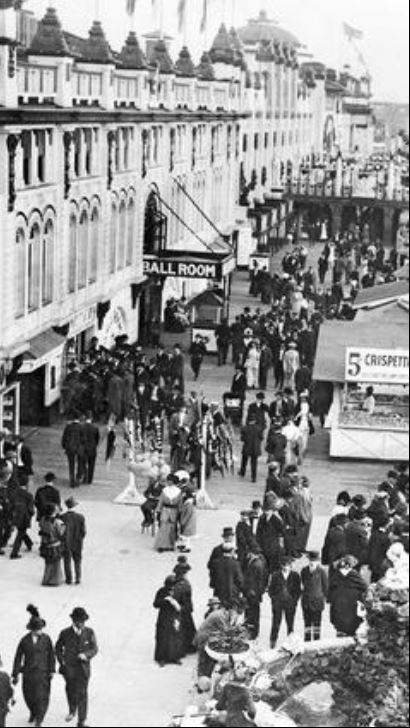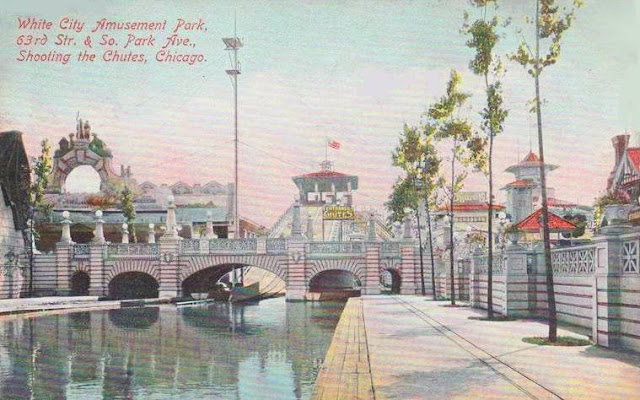Fluky's founder, Abe "Fluky" Drexler, opened in Chicago in 1929 on Maxwell and Halsted Streets. They carried all the character and romance for which Chicago Street Merchants were famous, and Fluky's reputation as having the city's best "Hot Dog" started to grow.
 |
| Fluky's Grand Opening on Maxwell and Halsted Streets in Chicago. April 16, 1932 |
On April 16, 1932, a second Fluky's was opened, and then in 1935, a third store was opened, and a fourth in 1936.
Fluky's Hot Dog Shoppe (1936)156 West Divison Street, Chicago1906 North Ogden Avenue, Chicago3551 West Roosevelt Road, Chicago6716 North Sheridan Road, Chicago
Addressing why the Fluky's on Lawrence Avenue is never mentioned.
 |
| Chicago Tribune, Wednesday, April 13, 1955. Here, the business name is spelled as "Flukey's Bar-B-Q. It's not the same as Fluky's Hot Dog Stand. |
Fluky's became known for its "Depression Sandwich" - a hot dog with mustard, relish, onion, pickles, pepper, lettuce, tomatoes, and French fries FOR ONLY 5¢! The "Garden on a Bun" was the depression sandwich without the hot dog, costing only 2¢.
Fluky's reputation was built on good food, good service, and goodwill through the hard times of the Depression. Many youngsters and adults who didn't have the nickel were fed anyway.
With the coming of World War II came meat rationing. This made it difficult to get the quality product Fluky's needed, and within a short time, Fluky's closed its doors at three of its locations, and the fourth was the only store to continue until 1955.
On February 18, 1964, Fluky's again opened its doors after 9 years of silence. The opening was greeted with a tremendous outpouring of warmth and fondness from thousands who had many fond memories.
On February 18, 1964, Fluky's again opened its doors after 9 years of silence. The opening was greeted with a tremendous outpouring of warmth and fondness from thousands who had many fond memories.
In just a few months, Fluky's was the largest Hot Dog stand in Chicago. Except Fluky's was no longer a Hot Dog Stand. It was now housed in a large glass-enclosed structure, previously unknown in the Hot Dog industry of push-carts and street stands.
Fluky's had made a giant step toward upgrading the Hot Dog business. The new building was on the west side of Western Avenue at 6732 North Western Avenue in the West Rogers Park neighborhood of the West Ridge community in Chicago (not in Rogers Park). There was a long, thin counter at the large windows to stand and eat, facing Western Avenue.
 |
| Fluky's, 6732 North Western Avenue, Chicago, Illinois. |
Fluky's opened at 9645 North Milwaukee Avenue, at Golf Road, in Niles in the 1980s.
In 1998, Fluky's moved to the east side of Western Avenue at 6821 N. Western Avenue in the West Ridge community of Chicago, where the new location offered a drive-thru. Fluky's closed on February 13, 2006.
Abe Drexler's son, Jack, opened a Fluky's in the Wal-Mart at 5630 W Touhy Avenue, Niles, Illinois. Many say that it is not the same. Perhaps they are just being nostalgic. Your comments are welcome.
 |
| Let's not forget the individually wrapped Hot Dog Gum given with counter orders. |
Compiled by Dr. Neil Gale, Ph.D.

















































































































